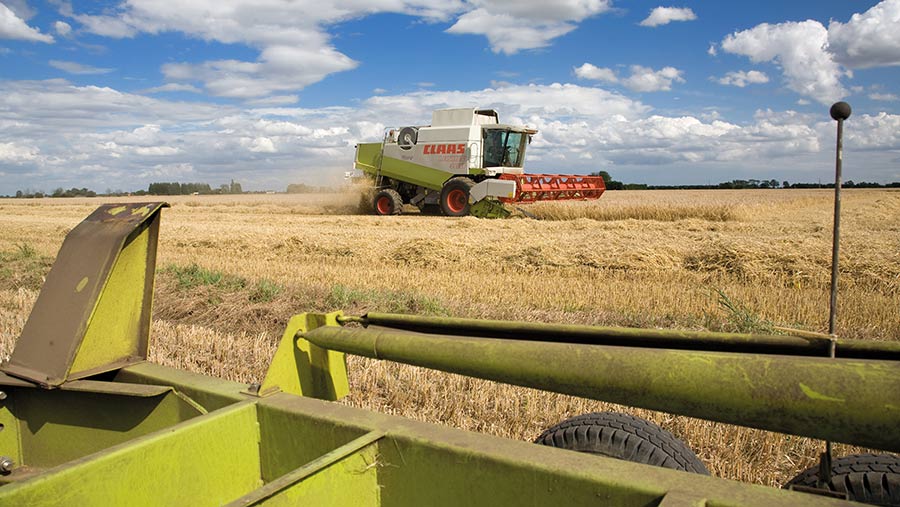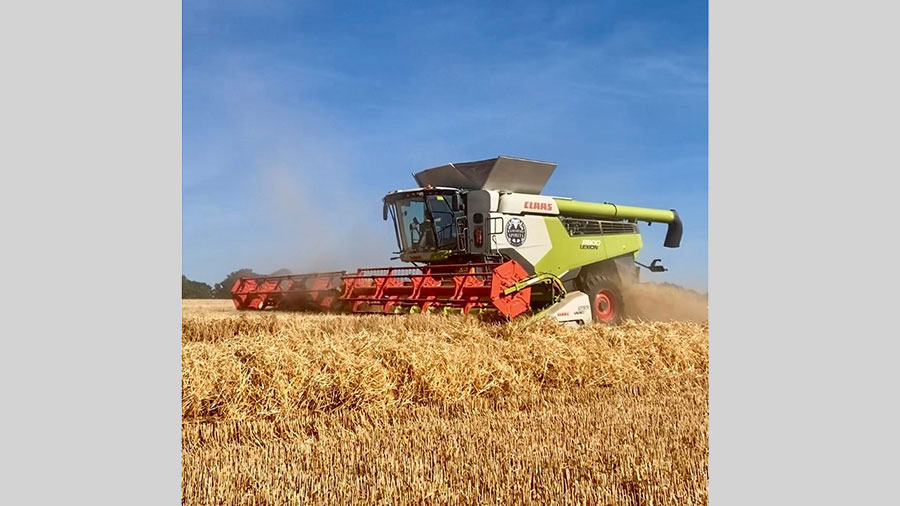Advice on growing malting barley to gain from high premiums
 © Tim Scrivener
© Tim Scrivener Premiums of £55-£60/t for malting barley are being offered this harvest, with the price supported by beer’s history of being recession-proof and the post-Covid recovery in beer sales.
For these reasons, and given likely inflationary effects on crop inputs, growers should not be in too much of a rush to drill wall-to-wall winter wheat this autumn, says Tom Eaton, trading manager at grain group Viterra.
“There is competition for land and if we have a kind autumn, wheat will get drilled,” he says. “This means that good malting barley buybacks will be available for harvest 2023, especially for Skyway, Planet and Laureate, even if premiums do come back a bit for next year.”
Malting premiums over feed barley have narrowed from £100/t in April/May due to the prospects of a good quality crop.
See also: Bedford grower switches 100% to new spring malting barley
Barley breeding
The performance of spring barley varieties has improved, says barley breeder Paul Bury of Secobra, with almost 2t/ha in yield being added since the 1990s.
Yields have risen from 6.7t/ha to 8.4t/ha in that time and the upward trend continues, with the progression in breeding translating into on-farm performance.
“It’s been achieved by varieties with higher tillering, bigger grain and better stress tolerance,” he says. “The newer varieties are equipped to cope with deficiencies because their rooting is improved.”
Variety choice
Planet and Laureate dominate current spring barley seed sales – with dual-purpose Laureate, suitable for brewing and distilling, responsible for 40% of the seed market and half of the malting barley purchased.
“Laureate has performed very well for the last two years. It may not be quite as good as Planet as far as brewing is concerned, but it does get the distilling premium for low nitrogen grain,” says John Miles, seed technical manager at agronomy group Agrii.
Planet can also be beaten on yield now, with Skyway, a new addition to the AHDB 2021-22 Recommended List having a 6% yield advantage. While its yield and grain quality look good, the variety hasn’t progressed through the official testing system fast enough to get full approval from the maltsters this year.
“Skyway remains provisionally approved for brewing. However, it has been tested by two of the maltsters and buybacks will be available if growers are interested in what it has to offer,” he says.
Its disease resistance ratings are slightly behind those of Planet, but it remains an exciting proposition and, for yield, sits at the top of the Recommended List with Jensen, he adds.
Nitrogen supply
Otherwise, Agrii’s trial work is looking at different ways of supplying the nitrogen that the spring barley crop needs, with the aim of reducing reliance on granular nitrogen fertiliser.
Rates of zero to 140kg/ha of nitrogen are being compared, with starter fertilisers, trace elements and foliar nitrogen products being put through their paces, as well as combinations of products, with yield, grain quality and any effects on margins being measured.
Agrii regional fertiliser co-ordinator Tom Perrott says: “There will be differences in their in-field performance, so we need to make growers aware of those and give advice on where and how to use them,”
Using off-the-shelf products that have been successful in other crops may affect grain nitrogen levels, especially if they are slower to release the nutrient, while stacking micronutrients with them may bring additional benefits, he adds.
“It’s early days for some of these trials, but with sustainability at the forefront of the supply chain’s thinking, it’s important to look at how to get the best from these products and their role in improving productivity and margins,” Mr Perrott says.
Maximising yields of spring barley
- Sufficient ears/sq m – target of 820
- Drill into a good seed-bed – be guided by conditions, not date
- Apply sufficient nitrogen at optimum timings
- Available phosphate is essential
- Healthy, disease-free tillers – maximise green leaf area retention
Barley for food
Development work with naked barley for use as a healthy food ingredient is continuing, with new variety Tenzing likely to be registered by Agrii at the end of the year.
The crop’s high beta glucan and dietary fibre content makes it suitable for food processing and ingredient uses, with all lines having the added benefit of being classified as wholegrain.
As the husk comes away when combining, yields are up to 20% lower than conventional barley, explains Mr Miles, who says lines adapted for UK conditions are showing promise.
“You would grow them much like a feed barley, as there are no nitrogen specifications that have to be met,” he says.
Given their quality traits, values of food barley should be high, so production would be tied into a buyback contract, he predicts.
Case study: Ramsbury Estates

Spring barley harvest at Ramsbury Estates © Ramsbury Estates
Spring barley is an important crop for Ramsbury Estates in Wiltshire, where 400ha of the crop is grown for malting.
While the estate has its own brewery – where a small proportion of the barley is used – the remainder goes to the wider brewing industry and is grown according to its requirement for a 1.6% grain nitrogen content.
High premiums and good commodity prices are making it stack up well, says farms manager Duncan Lee, who is growing both Laureate and Planet this year, but has also previously grown the Null Lox variety CB Score for Heineken.
“We have to grow what the market wants,” he says. “They are slow to test and move on to newly recommended varieties, so we are guided by their demands.”
Spring barley has always been grown at Ramsbury and fits into a wide rotation, which includes winter rye, oilseed rape, winter wheat and winter beans.
Cover and catch crops are grown at every opportunity, for the benefits they bring to soil functionality and nutrient cycling.
A recent change in the way that the crop is grown means that all its nitrogen requirement goes on in the seed-bed, reports Mr Lee.
“We don’t want high-nitrogen grain, so unless we are drilling very early, in which case I do split the application, all 140kg/ha of nitrogen goes into the seed-bed,” he says.
Having just sold some crop with a premium of £100/t, he says spring barley is proving to be competitive with other crop choices and fits in with the estate’s workload.
“Like all farm businesses, we will be managing our expenditure closely in the next cropping year, keeping an eye on inflationary pressures and scrutinising commodity markets.
“Spring barley does have the advantage of lower input costs and has always done well on this land.”
All the contributors were speaking to Farmers Weekly at Agrii’s spring barley day held at Ramsbury Estates in Wiltshire earlier this summer.

